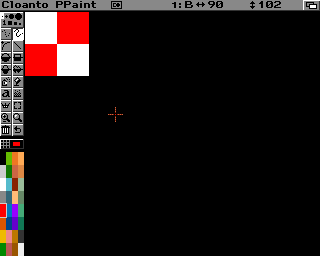

“At the time, it was costing thousands of dollars to do a typical spaceship shot. “We no longer needed tens of thousands of dollars worth of motion-control equipment to do shots, or expensive cameras, film, and all the other things that go with it,” says Thornton. Just like that, a lot of the limitations we had with traditional models disappeared.”Īs did the high cost of the equipment.

So, being able to do that in the computer was liberating in a sense. “ never really looked the way I wanted them to look. Before, I would build models and paint them, then I had to hand them over to someone else to light and do the motion-control work,” he says. Some years later, around 1990, Thornton discovered the Commodore Amiga personal computer – not for gameplay, music sequencing, or personal computing, but for creating digital models.
Lightwave 3d amiga series#
He assembled a portfolio and quickly landed a job at the BBC, which led to credits on some television series and films, such as Spaceballs (1987) and Star Trek (1979). So, Thornton, who recently had left his job in the airline industry, bought various materials and starting building miniature practical models. “On my way home after watching Alien with a friend, I realized that someone actually makes money building spaceships,” he says. Image courtesy Babylon 5 © PTEN/Warner Bros. Ron Thornton is one of those visionaries who embraced CGI at its infancy in the entertainment industry and devised workflows where none existed to introduce computer graphics to the broadcast world, starting with the sci-fi series Babylon 5. To succeed required these pioneers to blaze new paths, to turn the industry on its head, to start a revolution. Many had grand visions but lacked the blueprints and tools to help them in their quest using this new medium.

In the early part of the decade, computer graphics were novel, making headlines and turning heads for their groundbreaking use in feature film sequences, such as the liquid-metal shape-shifting T-1000 in Terminator 2 and the VR sequence in The Lawnmower Man. The 1990s were sort of the Wild West period in visual effects.


 0 kommentar(er)
0 kommentar(er)
